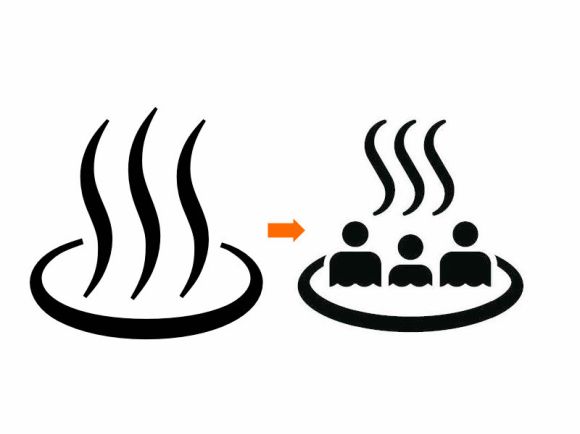
Opinions are divided over the new pictogram for hot springs.
With only four short years to go before the 2020 Tokyo Olympics, Japan is gearing up to welcome visitors from across the world with revamped stations, larger taxis, and even artificial meteor showers. One of the most recent developments, however, is dividing people in Japan, with the announcement that one of the nation’s most well-known and often used pictograms, the Japanese hot spring (“onsen” in Japanese) symbol, is up for revision.
▼ The “onsen mark” features a circular line, which represents a hot spring bath, along with three curved vertical lines resembling steam.
According to the The Ministry of Economy, Trade and Industry (METI), the symbol could be misinterpreted by foreigners as the mark of a restaurant that serves hot food. To avoid confusion, three people have been added to the onsen symbol, to clarify the fact that the image is used to represent hot spring bathing.
The revamped image, which was revealed by METI at a Japanese Industrial Standards revision committee meeting last week, is one of 70 public symbols set to appear from next summer in order to meet standards set by the International Organization for Standardization. Other pictograms up for revision include the “do not touch” symbol, which looks at changing the current raised palm image to a hand touching a flat surface with a diagonal line crossing over it, and the “information office” sign, which will be changed from a question mark to the more universally used “i” symbol. In addition, the ministry plans to create 40 new symbols for foreign tourists, to indicate Wi-Fi hotspots, ATMs that accept overseas cash cards, and prayer rooms for Muslims.
It’s the change to the onsen mark, however, that has some residents concerned, with much larger ramifications for onsen resort towns and businesses that incorporate the current symbol in their logos and products. The pictogram, for example, is used as part of the city logo for Atami, a famous hot spring town in Shizuoka Prefecture.
Atami uses the logo on its flag and city seal, with many products, souvenirs and even manhole covers in the area bearing the mark. Like Atami, other onsen towns that use the mark are now faced with the dilemma of deciding whether to use the revised symbol on their products for foreign visitors or stick to the original design.
▼ Onsen manju, soft sweet buns cooked by the steam of hot springs, are commonly stamped with the symbol, and they even have a cute character, Onsen Manju-kun, modelled after them. It’s yet to be revealed if the revision to the pictogram will affect them in the future.
Online comments in Japan regarding the proposed change to Japan’s onsen mark have included:
“I wish they would just leave the mark the way it is.”
“I’m sad about the change but I can see how it’s important to make things less confusing for foreign visitors.”“If we change symbols like this so foreigners can understand them, where’s the respect for Japanese culture?”
“Wouldn’t it have been better to add the word “onsen” in English underneath the original symbol?”
“How is this less confusing? It looks like people are being boiled to death in a big pot.”
While final revisions to the 70 symbols will be made by the end of the fiscal year in March 2017, the pictograms approved by JIS will not affect maps, but will be widely used in public spaces like buildings, train stations and tourist areas.
Sources: Ministry of Economy, Trade and Industry , NHK news , Twitter search “hot spring mark” , Tokyo Shimbun
Top image: pbs.twimg.com/Open Clip Art/Negaskun (edited by YouPouch)
Insert images: Open Clip Art/Negaskun, Wikimedia Commons/Public Domain, Sarugaya
[ Read in Japanese ]

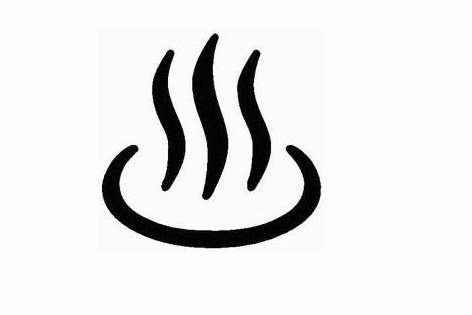
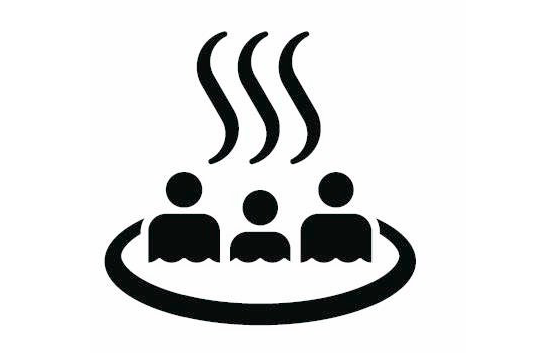

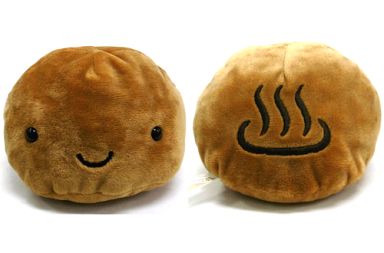
 Japan’s government reconsiders plan to change country’s iconic hot spring symbol after backlash
Japan’s government reconsiders plan to change country’s iconic hot spring symbol after backlash Japanese government recommends changing Buddhist temple mark on maps to avoid Nazi connotations
Japanese government recommends changing Buddhist temple mark on maps to avoid Nazi connotations New onsen facility in the heart of Tokyo’s business district to be ready for Olympics
New onsen facility in the heart of Tokyo’s business district to be ready for Olympics Japan’s Harajuku Station to be rebuilt ahead of 2020 Tokyo Olympics
Japan’s Harajuku Station to be rebuilt ahead of 2020 Tokyo Olympics Stylish new Experience Japan Pictograms are here to enhance your Japan travels and knowledge
Stylish new Experience Japan Pictograms are here to enhance your Japan travels and knowledge Foreigner’s request for help in Tokyo makes us sad for the state of society
Foreigner’s request for help in Tokyo makes us sad for the state of society McDonald’s new Happy Meals offer up cute and practical Sanrio lifestyle goods
McDonald’s new Happy Meals offer up cute and practical Sanrio lifestyle goods Red light district sushi restaurant in Tokyo shows us just how wrong we were about it
Red light district sushi restaurant in Tokyo shows us just how wrong we were about it Historical figures get manga makeovers from artists of Spy x Family, My Hero Academia and more
Historical figures get manga makeovers from artists of Spy x Family, My Hero Academia and more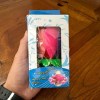 Celebrate another year of life by putting it in jeopardy with this birthday candle flower
Celebrate another year of life by putting it in jeopardy with this birthday candle flower Tokyo Tsukiji fish market site to be redeveloped with 50,000-seat stadium, hotel, shopping center
Tokyo Tsukiji fish market site to be redeveloped with 50,000-seat stadium, hotel, shopping center Anime girl English teacher Ellen-sensei becomes VTuber/VVTUber and NFT
Anime girl English teacher Ellen-sensei becomes VTuber/VVTUber and NFT Japan’s massive matcha parfait weighs 6 kilos, contains hidden surprises for anyone who eats it
Japan’s massive matcha parfait weighs 6 kilos, contains hidden surprises for anyone who eats it A Gintama fan’s emotional 19-year journey to buy a proper Lake Toya bokuto wooden katana【Pics】
A Gintama fan’s emotional 19-year journey to buy a proper Lake Toya bokuto wooden katana【Pics】 French Fries Bread in Tokyo’s Shibuya becomes a hit on social media
French Fries Bread in Tokyo’s Shibuya becomes a hit on social media Japanese ramen restaurants under pressure from new yen banknotes
Japanese ramen restaurants under pressure from new yen banknotes All-you-can-drink Starbucks and amazing views part of Tokyo’s new 170 meter-high sky lounge
All-you-can-drink Starbucks and amazing views part of Tokyo’s new 170 meter-high sky lounge Studio Ghibli releases new action figures featuring Nausicaä of the Valley of the Wind characters
Studio Ghibli releases new action figures featuring Nausicaä of the Valley of the Wind characters New private rooms on Tokaido Shinkansen change the way we travel from Tokyo to Kyoto
New private rooms on Tokaido Shinkansen change the way we travel from Tokyo to Kyoto Studio Ghibli glasses cases let anime characters keep an eye on your spectacles
Studio Ghibli glasses cases let anime characters keep an eye on your spectacles Beautiful Ghibli sealing wax kits let you create accessories and elegant letter decorations【Pics】
Beautiful Ghibli sealing wax kits let you create accessories and elegant letter decorations【Pics】 Studio Ghibli releases Kiki’s Delivery Service chocolate cake pouches in Japan
Studio Ghibli releases Kiki’s Delivery Service chocolate cake pouches in Japan New definition of “Japanese whiskey” goes into effect to prevent fakes from fooling overseas buyers
New definition of “Japanese whiskey” goes into effect to prevent fakes from fooling overseas buyers Our Japanese reporter visits Costco in the U.S., finds super American and very Japanese things
Our Japanese reporter visits Costco in the U.S., finds super American and very Japanese things Studio Ghibli unveils Mother’s Day gift set that captures the love in My Neighbour Totoro
Studio Ghibli unveils Mother’s Day gift set that captures the love in My Neighbour Totoro New Japanese KitKat flavour stars Sanrio characters, including Hello Kitty
New Japanese KitKat flavour stars Sanrio characters, including Hello Kitty More foreign tourists than ever before in history visited Japan last month
More foreign tourists than ever before in history visited Japan last month New Pokémon cakes let you eat your way through Pikachu and all the Eevee evolutions
New Pokémon cakes let you eat your way through Pikachu and all the Eevee evolutions Sales of Japan’s most convenient train ticket/shopping payment cards suspended indefinitely
Sales of Japan’s most convenient train ticket/shopping payment cards suspended indefinitely Sold-out Studio Ghibli desktop humidifiers are back so Totoro can help you through the dry season
Sold-out Studio Ghibli desktop humidifiers are back so Totoro can help you through the dry season Japanese government to make first change to romanization spelling rules since the 1950s
Japanese government to make first change to romanization spelling rules since the 1950s Ghibli founders Toshio Suzuki and Hayao Miyazaki contribute to Japanese whisky Totoro label design
Ghibli founders Toshio Suzuki and Hayao Miyazaki contribute to Japanese whisky Totoro label design Doraemon found buried at sea as scene from 1993 anime becomes real life【Photos】
Doraemon found buried at sea as scene from 1993 anime becomes real life【Photos】 Tokyo’s most famous Starbucks is closed
Tokyo’s most famous Starbucks is closed One Piece characters’ nationalities revealed, but fans have mixed opinions
One Piece characters’ nationalities revealed, but fans have mixed opinions We asked a Uniqlo employee what four things we should buy and their suggestions didn’t disappoint
We asked a Uniqlo employee what four things we should buy and their suggestions didn’t disappoint Princesses, fruits, and blacksmiths: Study reveals the 30 most unusual family names in Japan
Princesses, fruits, and blacksmiths: Study reveals the 30 most unusual family names in Japan Japan Airlines giving foreign travelers 100,000 free round-trip tickets during the Tokyo Olympics
Japan Airlines giving foreign travelers 100,000 free round-trip tickets during the Tokyo Olympics 18 awesome overnight hot spring trips from Tokyo, and a quiz to help pick the best one for you
18 awesome overnight hot spring trips from Tokyo, and a quiz to help pick the best one for you Japanese lawyer comments on legality of tattoo ban at hot springs, netizens share thoughts too
Japanese lawyer comments on legality of tattoo ban at hot springs, netizens share thoughts too Learn all about enjoying a traditional Japanese-style ryokan inn from this nine-minute video!
Learn all about enjoying a traditional Japanese-style ryokan inn from this nine-minute video! Kyoto may be getting more modern, tall buildings as city relaxes development limits
Kyoto may be getting more modern, tall buildings as city relaxes development limits Japanese government encouraging hot springs to ease tattoo restrictions
Japanese government encouraging hot springs to ease tattoo restrictions Japanese mayor responds to public after “spamusement park” onsen video reaches 1 million views
Japanese mayor responds to public after “spamusement park” onsen video reaches 1 million views Naomi Osaka chooses Japanese citizenship over U.S., hopes to represent Japan at Tokyo Olympics
Naomi Osaka chooses Japanese citizenship over U.S., hopes to represent Japan at Tokyo Olympics Onsen town’s 4K video has visitors lining up around the virtual block【Video】
Onsen town’s 4K video has visitors lining up around the virtual block【Video】 The top 10 hot springs Japanese travelers want to visit this fall
The top 10 hot springs Japanese travelers want to visit this fall Gravure model NFT series wants to attract online investors, real-world visitors for hot springs
Gravure model NFT series wants to attract online investors, real-world visitors for hot springs Ridiculously powerful hot spring bath in Japan earns both our respect and our fear【Videos】
Ridiculously powerful hot spring bath in Japan earns both our respect and our fear【Videos】 Iconic Kyoto Tower bathhouse closes due to coronavirus
Iconic Kyoto Tower bathhouse closes due to coronavirus Pikachu and Super Mario left out of lineup of official spokescharacters for Tokyo Olympics
Pikachu and Super Mario left out of lineup of official spokescharacters for Tokyo Olympics Japanese artists anthropomorphise national flags into samurai characters for 2020 Tokyo Olympics
Japanese artists anthropomorphise national flags into samurai characters for 2020 Tokyo Olympics
Leave a Reply